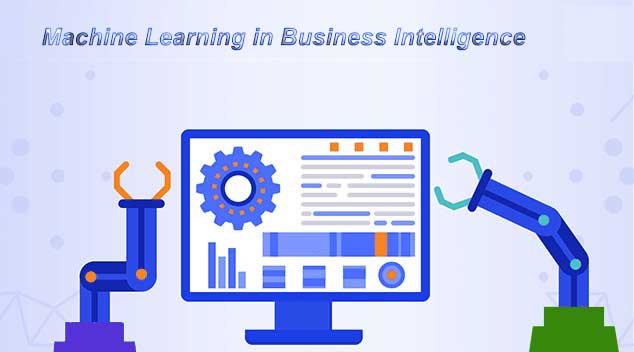Machine Learning in Business Intelligence: Revolutionizing Data-driven Decision Making
Machine Learning (ML) is rapidly transforming the landscape of Business Intelligence (BI), offering unprecedented capabilities for extracting insights, predicting outcomes, and optimizing processes. By harnessing the power of ML algorithms, organizations can unlock valuable insights from their data, enabling more informed and strategic decision-making. Here’s how ML is revolutionizing BI:

1. Advanced Predictive Analytics:
ML algorithms can analyze historical data to identify patterns and trends, allowing businesses to predict future outcomes with greater accuracy. From forecasting sales and demand to predicting customer behavior and market trends, ML-powered predictive analytics enables proactive decision-making and strategic planning.
2. Customer Segmentation and Personalization:
ML algorithms can segment customers based on their preferences, behaviors, and purchasing patterns, enabling businesses to deliver personalized experiences and targeted marketing campaigns. By understanding individual customer needs and preferences, organizations can enhance customer satisfaction and loyalty.
3. Anomaly Detection and Fraud Prevention:
ML algorithms can detect anomalies and unusual patterns in data, helping businesses identify potential fraud, security breaches, and operational inefficiencies. By flagging suspicious activities in real-time, ML-powered anomaly detection systems enable businesses to mitigate risks and protect their assets.
4. Automated Data Processing and Insights Generation:
ML algorithms can automate data processing tasks, such as data cleansing, transformation, and enrichment, accelerating the process of generating actionable insights. By automating routine tasks, ML-powered BI systems free up human resources to focus on more strategic activities and decision-making.
5. Natural Language Processing (NLP) and Sentiment Analysis:
ML-powered NLP algorithms can analyze unstructured data, such as text documents, social media posts, and customer reviews, to extract insights and sentiment. By understanding and interpreting human language, organizations can gain valuable insights into customer feedback, market sentiment, and brand reputation.
6. Dynamic Data Visualization and Exploration:
ML-powered data visualization tools can generate dynamic and interactive visualizations that enable users to explore and analyze complex data sets more intuitively. By visualizing data in meaningful ways, ML-powered BI systems facilitate deeper insights and understanding of business trends and performance metrics.
7. Continuous Learning and Adaptation:
ML algorithms can continuously learn from new data and user feedback, refining their models and recommendations over time. By adapting to changing business conditions and user preferences, ML-powered BI systems ensure that insights remain relevant and actionable in a dynamic and evolving environment.
Conclusion:
Machine Learning is revolutionizing Business Intelligence by enabling organizations to extract actionable insights from their data with unprecedented speed, accuracy, and efficiency. From predictive analytics and customer segmentation to anomaly detection and automated data processing, ML-powered BI systems offer a wide range of capabilities that empower businesses to make data-driven decisions with confidence and agility. By embracing ML in BI, organizations can gain a competitive edge, drive innovation, and unlock new opportunities for growth and success in today’s data-driven economy.